What is Gym Chalk Used for: from A to Z
Author:
Unlock your full potential by engaging with our experts and community! Have questions about your fitness journey or looking for expert advice on weightlifting techniques? Don’t hesitate — leave a comment below and Ihor Shymechko will provide a personalized answer and insights to help you reach your goals.
Torokhtiy is reader-supported. Some links are affiliate links, and we may earn a commission at no extra cost to you. See our disclosure page for details.
Have you ever spoiled some reps because of a bar slipping off your hands? I’m sure I can help you with that.
What is gym chalk used for? Read about its purposes, types, and ways to use this rep-saving tool effectively.
Chalk for weightlifting (also powerlifting chalk) is widely used to reduce sweat, improve the grip and make lifts more comfortable and secure. Both professional and amateur athletes from various sports can’t imagine a workout without this helpful tool.
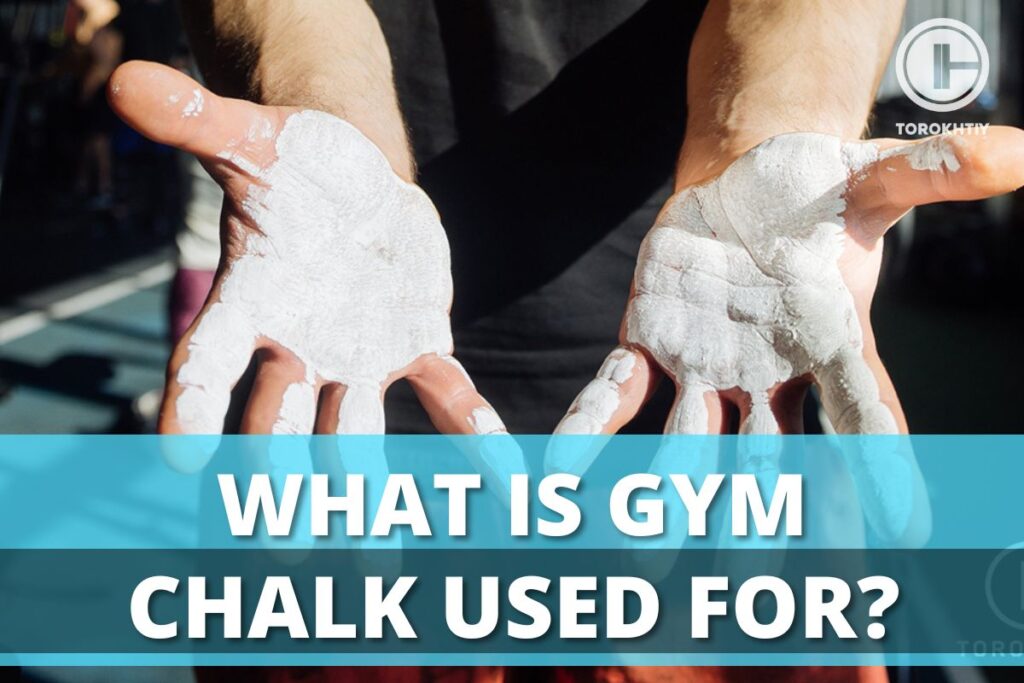
What is Gym Chalk?
Do not confuse chalk for weightlifting with ordinary one which contains completely different ingredients and thus has different properties. Sports chalk is made of a mineral called magnesium carbonate which determines its special structure.
This particular quality “sticks” the substance to the hands and provides a long-term effect. Apart from that, some producers use more additives such as limestone, drying agents, and even essential oils to bring up new properties.
Gym chalk is used in many sports, for example, weightlifting, powerlifting, fitness, gymnastics, climbing, etc. If you have ever spotted someone white-handed in the gym, be sure that they use this substance.
Athletes apply it to their hands in order to reduce sweating and slipping and thus make the grip stronger. It is particularly helpful while working with barbells, dumbbells, poles, gymnastic bars, rings, etc.
You can find a wide choice of gym chalk on market. I will walk you through all possible types to help you make up your mind:
1. Solid Chalk
This type is sold in blocks of different sizes which become powder on your hands when rubbing. It isn’t as messy as the previous one and is still cheaper than the liquid one.
As to the drawbacks of both types of dry chalk, there is some research on their effect on air quality and lung health. In a nutshell, if you are prone to respiratory problems, you better choose the liquid form that doesn’t create any dust in the air.
But if your skin is sensitive or allergic, consider buying dry chalk which is purer and doesn’t contain any additives.
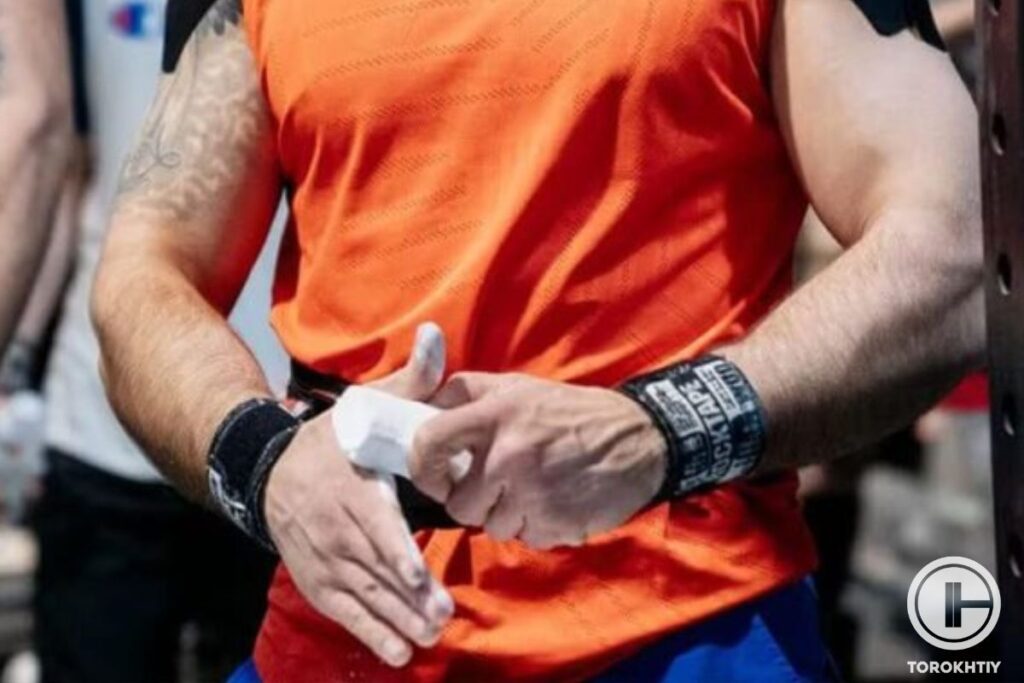
2. Liquid Chalk
It is the most cutting-edge type of gym chalk. Though it is slightly more expensive than the previous ones, it benefits you in terms of convenience and effectiveness.
Firstly, it lasts on your hands significantly longer and doesn’t leave any marks on clothes. Moreover, the transportation of a small bottle won’t cause any difficulties.
On top of that, liquid chalk contains alcohol that provides an antibacterial and antiviral effect which is another upside due to Covid-19. But don’t forget to close tightly the bottle after using it to prevent chalk from drying out.
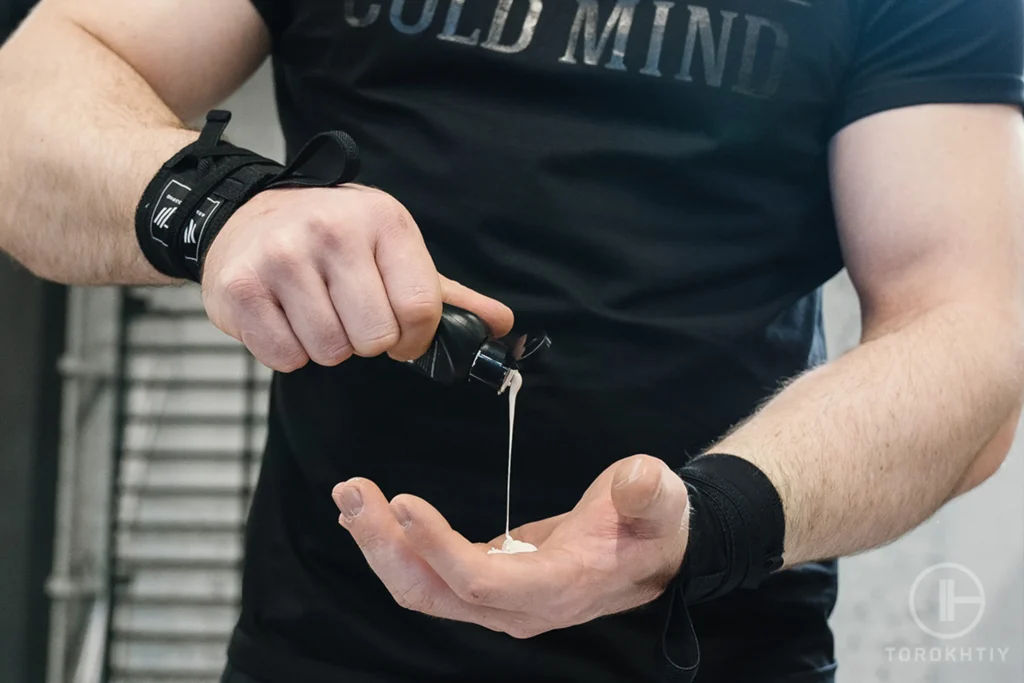
Why to Use Chalk?
If you still aren’t sure what does chalk do for lifting, I will briefly conclude all the benefits:
1. Stronger Grip
The very first question on this topic is “does chalk help with grip?”. Yes. It is no secret that a slipping barbell has spoiled many important lifts.
In order to prevent this situation, use gym chalk whenever performing any exercise which demands a confident grip. While absorbing sweat, it will improve friction and literally “stick” your hands to a barbell.
2. Safe Workout
A slipping barbell can destroy not only your mood but also be dangerous and put you at risk of injury. Imagine yourself performing a heavy deadlift and realizing that the grip is going looser.
Mostly, you will end up with the improper technique just to hold a bar and finish the exercise. So I recommend using gym chalk to save your joints and tendons.
3. Hygiene
Sweaty palms in the gym are neither aesthetic nor healthy. Leaving greasy marks on sports equipment is conducive to bacteria and virus spread as well as unpleasant for other athletes. And, as I mentioned before, liquid chalk works almost like an antiseptic.
4. Concentration
If a slipping bar bothers you and stops you from lifting heavier weights, it is time to put gym chalk in your bag. Even if you manage to perform exercises with sweating hands, it often distracts your attention and breaks concentration.
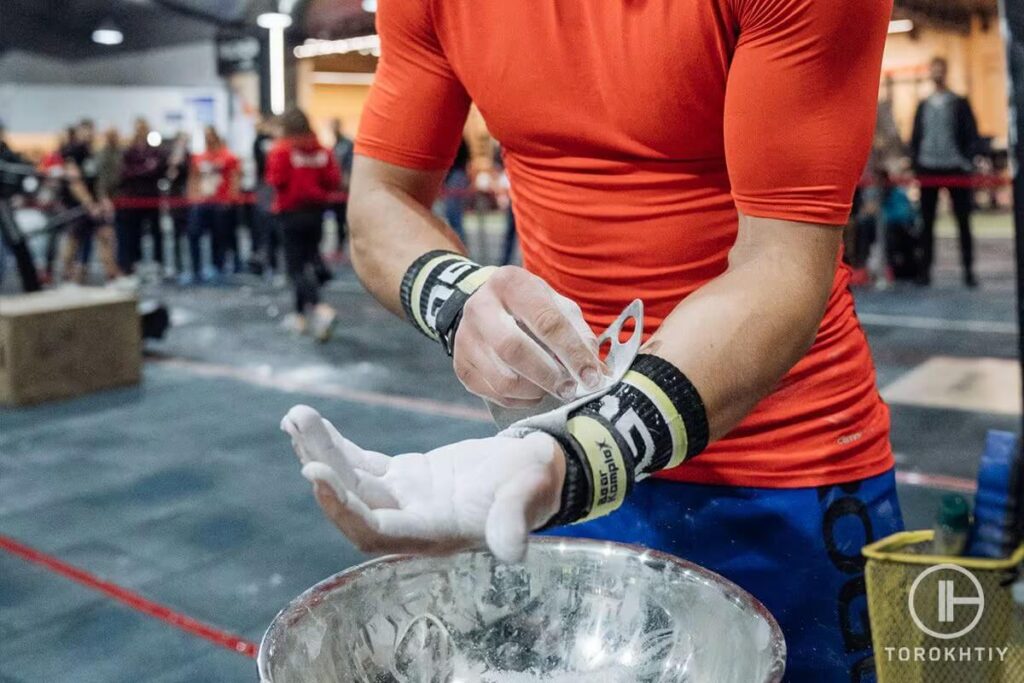
5. Protecting your Hands
I’m often asked: “Does chalk prevent calluses?” Of course, gym chalk doesn’t guarantee that you will forget about calluses forever.
Yet, it does create a protective layer and reduces the sharp effect of barbell knurling on your hands. Though it prevents tearing your skin, it still dries it up so don’t forget about moisturizing if you seek soft palms.
When isn’t Gym Chalk Necessary in the Gym?
At this point, you may wonder if gym chalk is necessary for any athlete. Well, if you do weightlifting, powerlifting or fitness – yes, it is essential. But if you are into fitness, there are other options as well.
The most common alternative is gym gloves. They are suitable for nearly all fitness exercises and protect your hands well. Still, some athletes find them not comfortable and rather distractive. Moreover, they are not suitable for Olympic lifts.
Another tool is weightlifting straps though they can’t replace gym chalk completely. They are mainly used for the deadlift or snatch but not all the exercises.
For example, using them in the clean demands significant wrist mobility. On top of that, it is more effective to combine them with gym chalk, especially in the case of very sweaty palms. All in all, it depends on your kind of sport, exercises you perform and individual peculiarities.
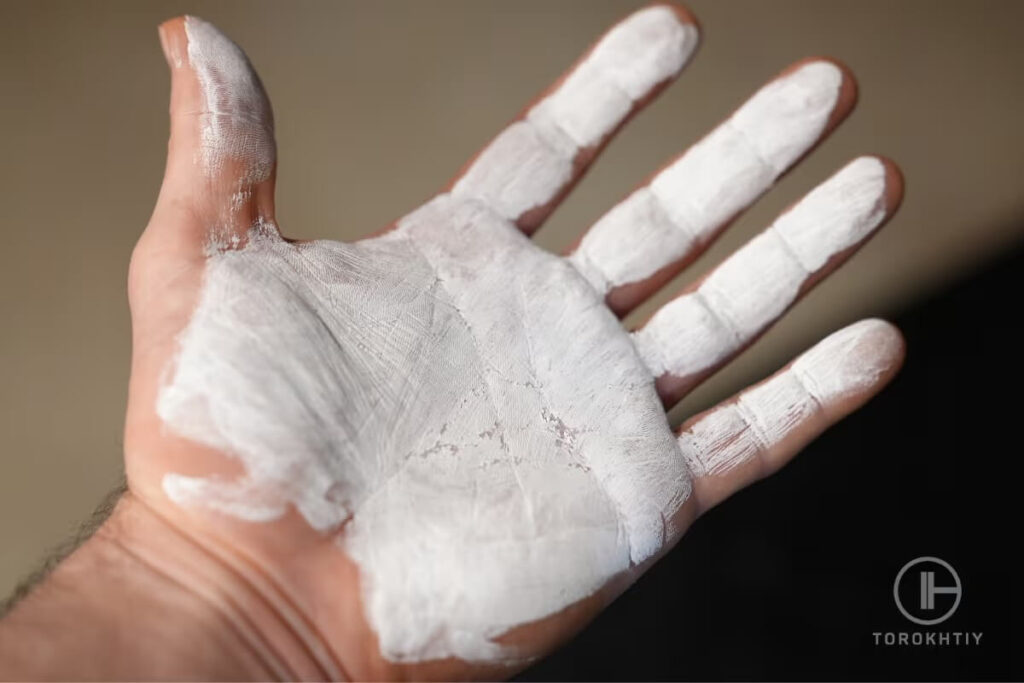
How to Use Chalk Correctly?
Here is a quick guide on how to use hand chalk for gym properly:
- Make sure your hands are completely dry. The best decision is to wash them before a workout.
- Apply a thin layer to the palms. Cover every inch of the skin including areas between fingers. If you use the hook grip, pay special attention to the thumb.
When using dry chalk, you are ready to do an exercise at once but in case of the liquid one, wait till it dries out completely (the time depends on the brand). - Rub chalk on your hands every time you see some blank spaces on your palms or feel that the grip weakens. If you use dry chalk, you may need to do that quite often but the liquid one is more lasting.
- Wash your hands with soap thoroughly immediately after a workout. If your skin is sensitive or dry, apply a moisturizer to make it softer.
Also, I have prepared some tips for you:
- Always keep gym chalk close to quickly apply it whenever needed.
- Clean a barbell from chalk to prevent rust. Use a special hard brush.
- Don’t apply too much chalk, it won’t benefit you anyway.
- If you need to wash the chalk off the floor, add a bit of vinegar to the water.
WARM BODY COLD MIND Liquid Chalk
FAQ
What is the difference between chalk and gym chalk?
Regular chalk is made of calcium sulfate while the ingredient for gym chalk is magnesium carbonate. The first one is firmer, doesn’t stick to your hands that well and doesn’t dry them out.
Why do gyms not allow chalk?
Gym chalk may be quite messy and difficult to clean so some gyms ban athletes from using it. Still, it is allowed in weightlifting and fitness gyms.
Can gym chalk be used for climbing?
Gym chalk SHOULD be used for climbing as well as for weight training to get a better and safer grip.
So Should I Use Gym Chalk?
All in all, gym chalk is a life-saving tool for a better grip and more effective training. You are now definitely ready to try it out.
If you have any further questions, feel free to ask in the comments. Also, share your impression and advice on using gym chalk. Wish you a strong grip and effective workouts!
References:
- Magnesium carbonate // Wikipedia: https://en.wikipedia.org/wiki/Magnesium_carbonate
- “Magnesia Alba “Chalk Dust” and Air Quality: A Comparative Study of Two University Rock Walls” // ODU Digital Commons: https://digitalcommons.odu.edu/undergradsymposium/2020/postersession/39/
- Liquid Chalk Is an Antiseptic against SARS-CoV-2 and Influenza A Respiratory Viruses // MSphere: https://journals.asm.org/doi/10.1128/mSphere.00313-21
- Photos made by Torokhtiy Media Team.
Also read:
Why Trust Us?
With over 20 years in Olympic weightlifting, strength training, nutrition coaching, and general fitness our team does its best to provide the audience with ultimate support and meet the needs and requirements of advanced athletes and professional lifters, as well as people who strive to open new opportunities and develop their physical capabilities with us.
By trusting the recommendations of our certified experts in coaching, nutrition, and sports training programming, as well as scientific consultants, and physiotherapists, we provide you with thorough, well-considered, and scientifically proven content. All the information given in the articles concerning workout programming, separate exercises, and athletic performance, in general, is based on verified data.
The product testing process is described in more detail here.
Author: Ihor Shymechko
Pro Olympic Weightlifter, Coach
Best Results: Snatch – 208 kg,
C&J – 240 kg
Ihor has been a professional weightlifter since 1996, boasting over two decades of competition experience. His notable achievements include clinching the European Championship in 2009 and securing a silver medal in the 105kg division at the Senior World Championships in 2011. Ihor represented his country in the 2008, 2012, and 2016 Summer Olympics. After retiring from competitive weightlifting, he transitioned to coaching, leveraging his vast experience to guide athletes who now compete on both national and international stages.



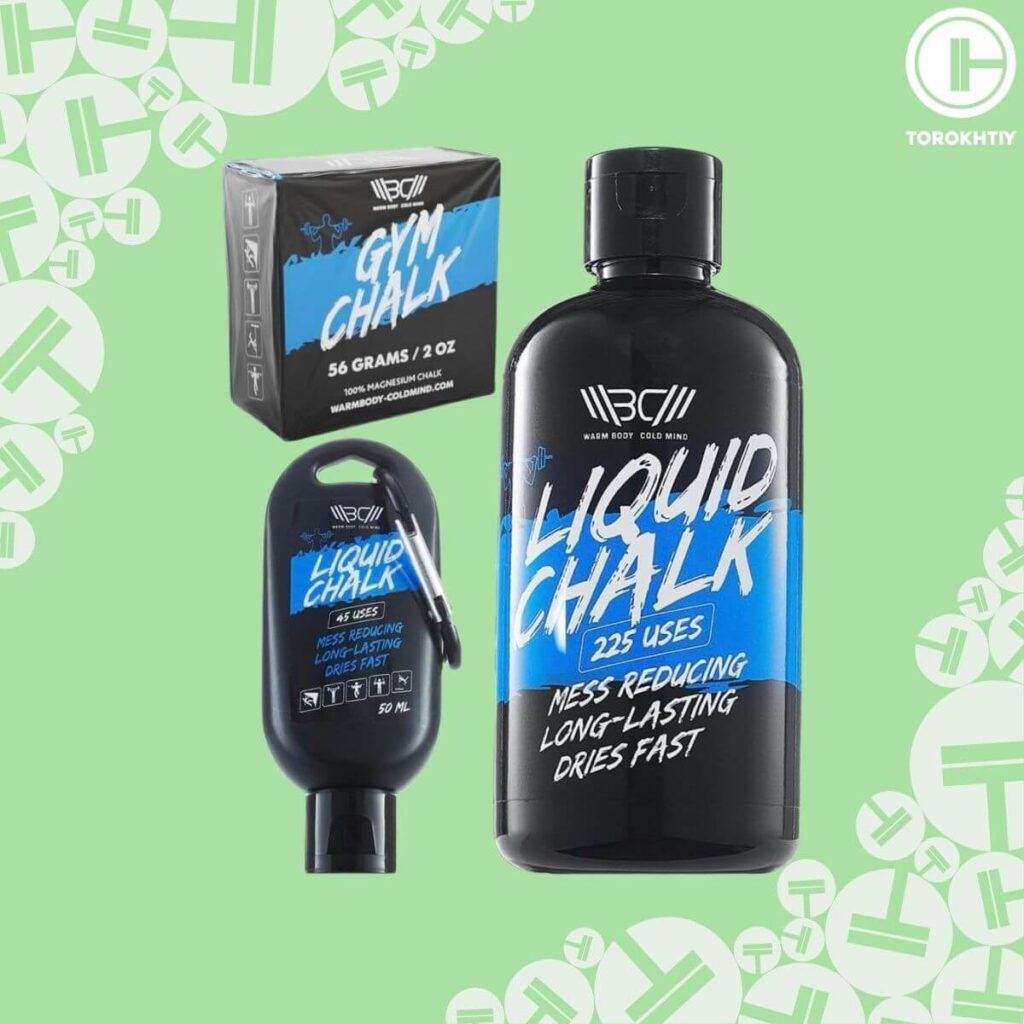
Still have questions after reading our article? Unlock your full potential by engaging with our experts and community! Don’t hesitate — leave a comment below and Ihor Shymechko will provide a personalized answer and insights to help you reach your goals.